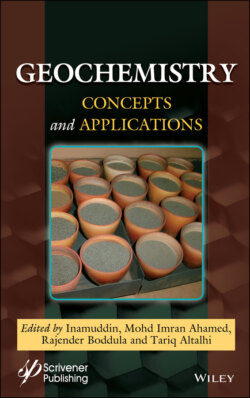Читать книгу Geochemistry - Группа авторов - Страница 9
1.1 Introduction
ОглавлениеSerpentinitic geological environments, consisting of serpentines and their ultramafic precursors or protoliths occur on all continents and cover about 1% of the earth surface [1]. To date, research on serpentinitic geological environments has been limited to their geology, geochemistry, and ecology [1, 2]. However, the medical geology of serpentinitic geological systems has received limited research attention. Medical geology seeks to understand how the interactions between humans and animals, and geological processes and activities influence human and animal health [3, 4]. The field of medical geology has attracted significant public and research attention, and an increasing body of literature exists on the subject [3, 5, 6]. The literature on medical geology, include (1) reviews presenting an overview of the discipline [3, 5, 6] and (2) empirical studies investigating the human health risks of specific geological processes and contaminants [7, 8].
Serpentinitic geological systems contain anomalously high concentrations of toxic geogenic contaminants, which pose human health risks. These include, toxic elements such as rare earth elements and metals, and chrysotile asbestos [3, 4, 9]. Toxic metals occurring in serpentinitic geological environments include cobalt (Co), chromium (Cr), iron (Fe), manganese (Mn), nickel (Ni), and zinc (Zn). The 17 rare earth elements include the lanthanides, Yttrium, and Scandium [10]. Unlike toxic metals and rare earth elements, chrysotile asbestos is not a chemical element, but a compound. In view of this, the term “toxic geogenic contaminants” is broadly used in this chapter to refer to both chrysotile and toxic elements. Limited reviews exist on the occurrence, human exposure, and health risks of toxic geogenic contaminants in serpentinitic geological systems. An exception is a recent review investigating the nature, biogeochemical behavior, human exposure pathways, and health risks of toxic geogenic contaminants in serpentinitic ultramafic geological systems [4].
The current chapter seeks to present an overview of the nature, occurrence, environmental behavior, and human exposure pathways and health risks associated with toxic geogenic contaminants in serpentinitic geological systems. The specific objectives are to (1) discuss the occurrence and environmental behavior of toxic geogenic contaminants, (2) summarize the human exposure and health risks of toxic geogenic, and (3) highlight mitigation measures and future research needs. Figure 1.1 summarizes the key focus on the chapter, including the nature, human exposure pathways, and health risks of toxic geogenic contaminants in serpentinitic geological systems and their ultramafic protoliths.
Figure 1.1 Summary of the nature, environmental sources, and human exposure and health risks of toxic geogenic contaminants in serpentinitic geological systems and their ultramafic protoliths. Adapted and redrawn based on Gwenzi [4].
